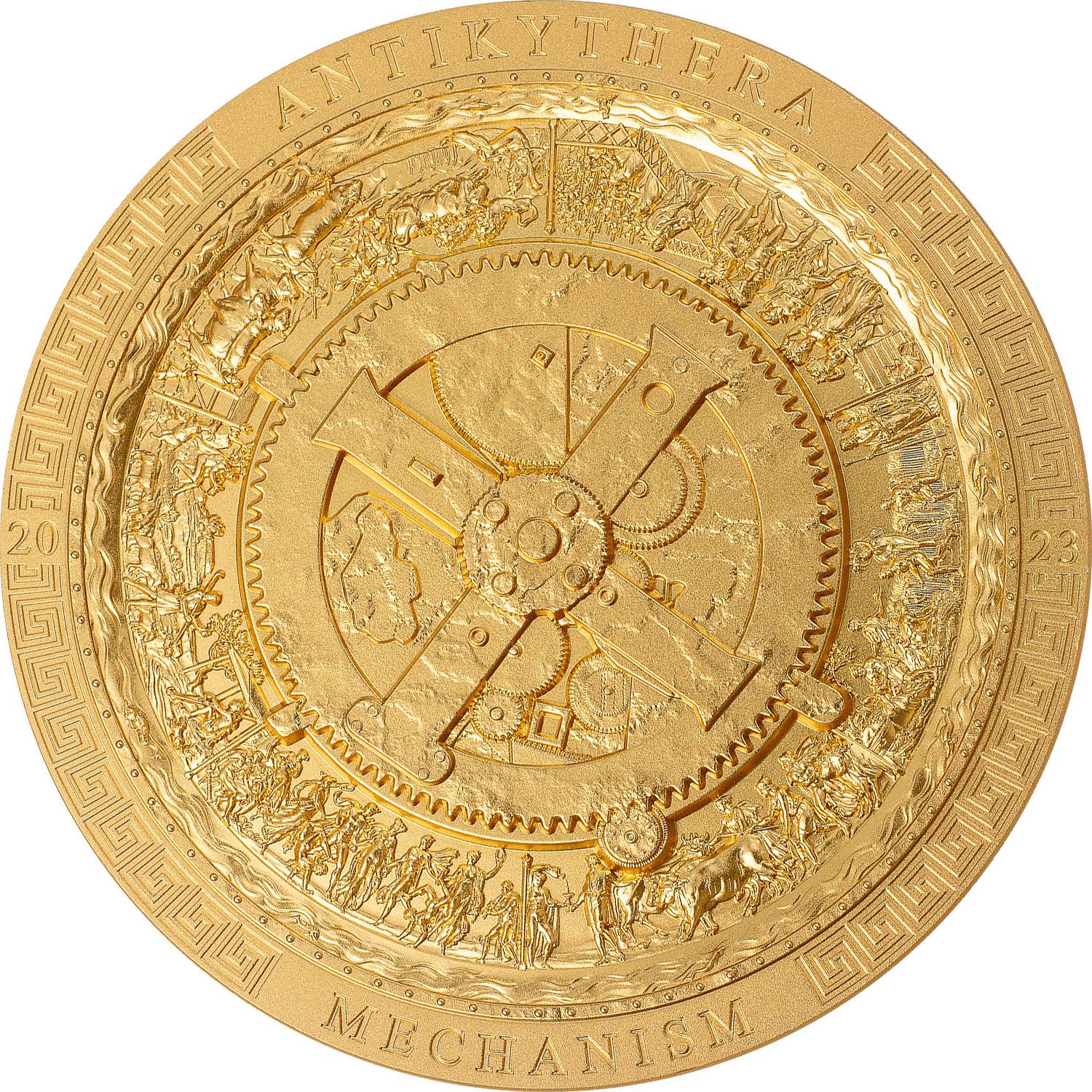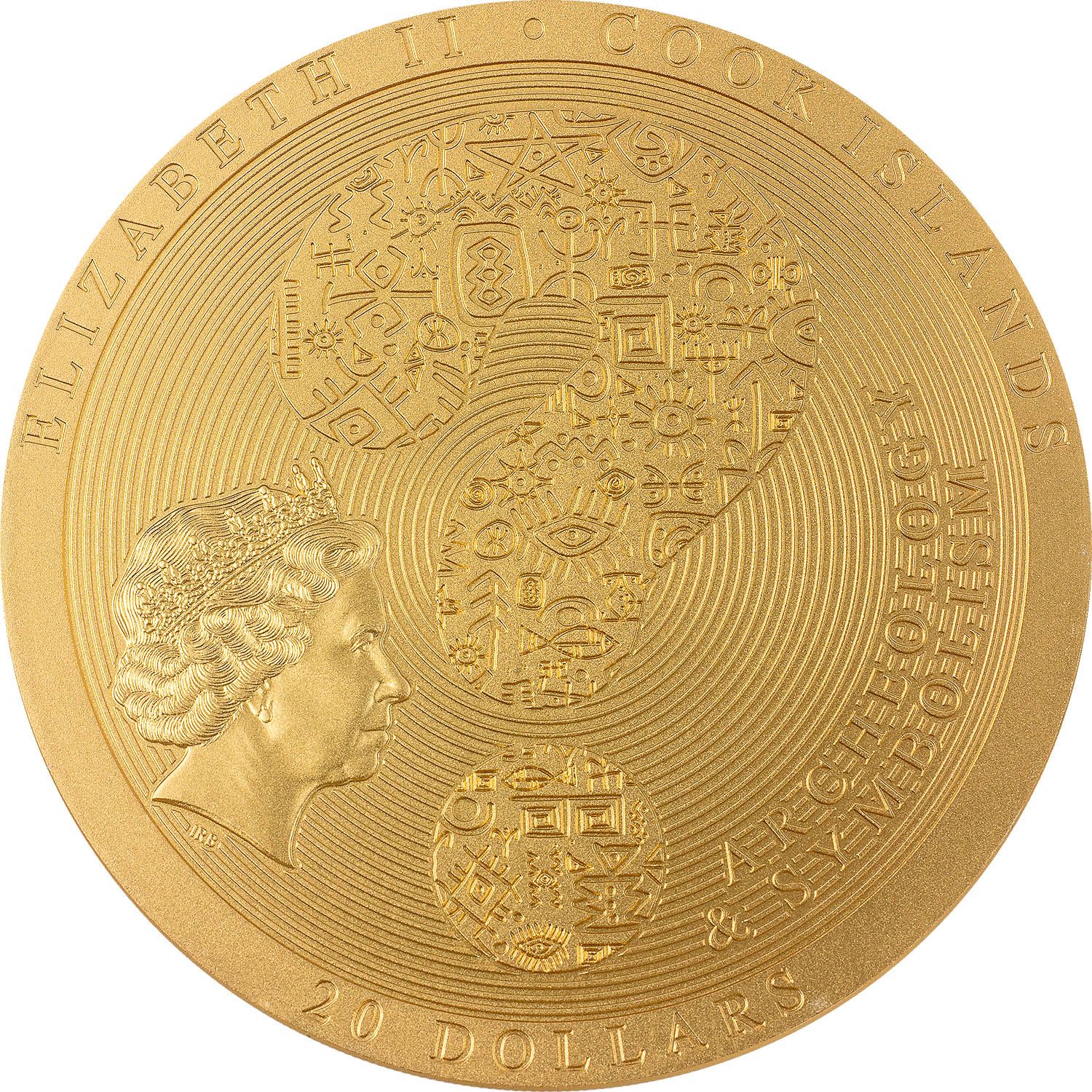Cook Islands – 2023 – 20 Dollars – Antikythera Mechanism Full Gilded
€ 599.95
In stock / on backorder
| Issuing Country | Cook Islands |
| Year of Issue | 2023 |
| Face Value | 20 Dollars |
| Metal | Silver |
| Fineness (purity) | 999/1000 |
| Weight | 3 oz |
| Diameter | 65 mm |
| Quality | Silk finish gilded |
| Mintage | 111 pcs. |
| Scope of Delivery | Box Certificate |
| Special features | Smartminting and antique finish and |
Description
The ‘Antikythera Mechanism’ gilded coin is the 10th issue in the ‘Archeology & Symbolism’ series. Taking advantage of the enhanced ultra high relief Smartminting©️ technology puts the Antikythera mechanism in a complete new perspective. The coin has an silk gilded finish (or antiqued for the other two versions) and is struck on a huge 3 oz pure .999 silver 65mm blank in the highest quality possible. It has a limited mintage of only 333 pcs antiqued, 111 pcs partially gilded, and 111 pcs gilded worldwide. The coin comes in a beautiful box with a Certificate of Authenticity. Get the 10th edition of this series now at your local modern coin dealer before it gets sold out as all previous issues did.
Coin description
The reverse of the coin depicts the Antikythera mechanism in ultra high relief in the middle. Around the Antikythera mechanism are the various bas sculptures from ancient Greece. Surrounded by a circle of waves and metal ornaments representing the sea and ship it was found in. On the edge are the inscriptions: “Antikythera mechanism” (the name) and “2023” (the year of issue). It has ultra-high relief and interesting small details all related to ancient Greece and its scientists.
The obverse side of the coin depicts the Coat of Arms of the Cook Island in a special appearance with the inscriptions: “ELIZABETH II” (name of the Queen), “COOK ISLANDS” (the issuing country), “ARCHEOLOGY & SYMBOLISM” (the name of the series) and “20 DOLLARS” (the face value).
Background information
The Antikythera mechanism is generally referred to as the first known analogue computer and discovered in 1902 in a Roman shipwreck of the coast of Antikythera, Greece. It was constructed by Greek scientists in the 1st or 2nd century BC based on theories of astronomy and mathematics of that time. Studies have revealed that it must have had 37 meshing bronze gears (or possibly more) in a wooden frame. These gears were able to track the movements of the Moon and the Sun through the zodiac. It was able to predict astronomical positions and eclipses many years in advance. There must have been highly detailed panels with dates, eclipses, calendars and more at the front and the back which are, except for some small pieces, lost. One thing is sure, it’s an amazing analogue computer over two centuries old.








